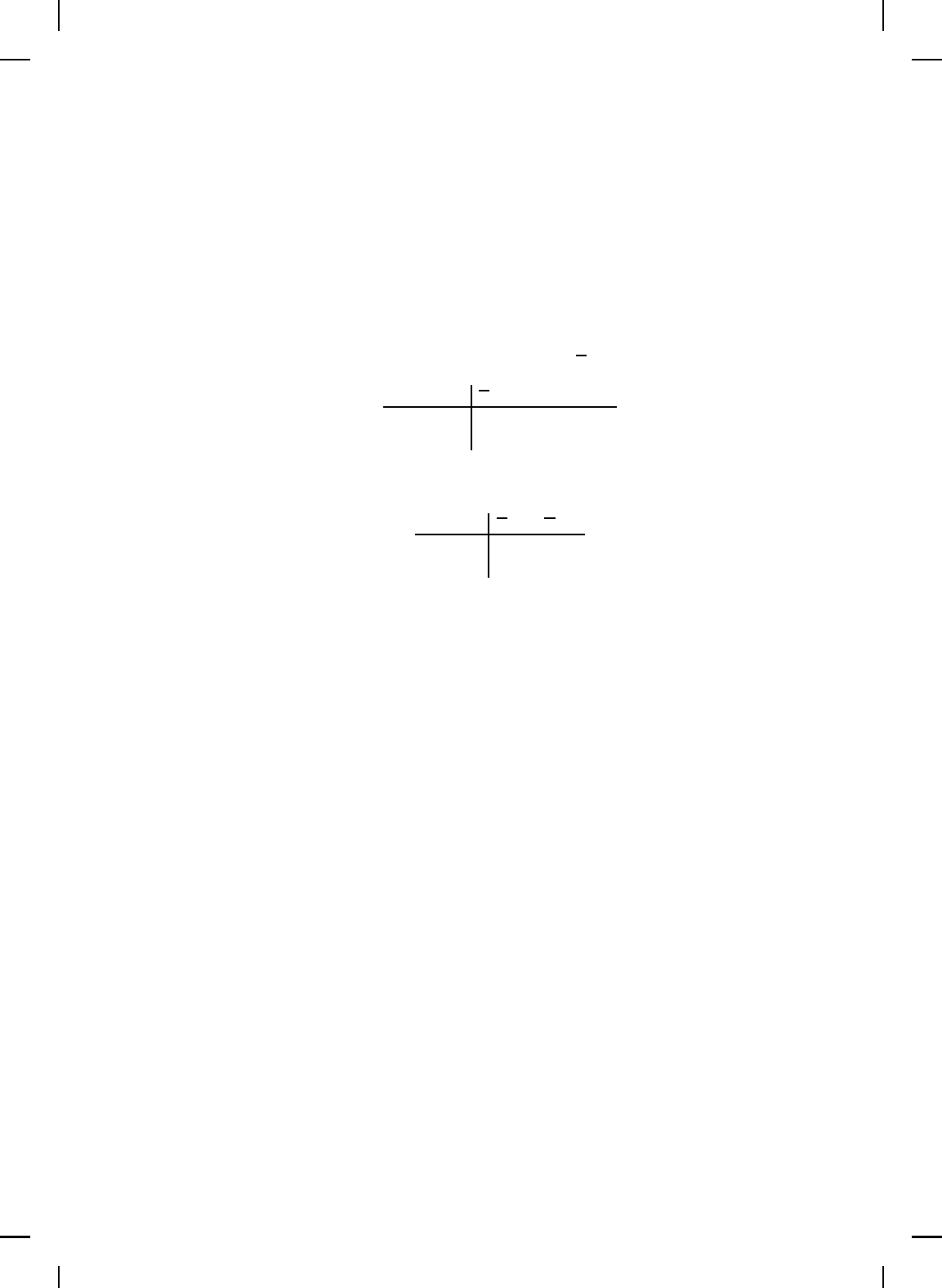Haddad W.M. Nonlinear Dynamical Systems and Control: A Lyapunov-Based Approach
Подождите немного. Документ загружается.


NonlinearBook10pt November 20, 2007
STRUCTURED PARAMETRIC UNCERTAINTY 755
Then, with the feedback control law u = φ(x)
△
= − R
−1
2a
(P
a
x +
1
2
B
T
g
′
T
(x)),
where g(x) =
P
r
ν=2
ˆ
P
ν
x
[2ν]
, the zero solution x(t) ≡ 0 of the uncertain
system (12.162) is globally asymptotically stable for all x
0
∈ R
n
and ∆A ∈
∆
A
, and the performance functional (12.144) satisfies
J
∆A
(x
0
, φ(x(·))) ≤ J(x
0
, φ(x(·))) = x
T
0
(P + P
0
(∆A)x
0
+
r
X
k=2
ˆ
P
ν
x
[2ν]
0
,
∆A ∈ ∆
A
, (12.167)
where
J(x
0
, u(·))
△
=
Z
∞
0
[L(x, u) + Γ(x, u) −x
T
(t)(A
T
P
0
(∆A) + P
0
(∆A)A)x(t)]dt,
(12.168)
and where u(·) is admissible, and x(t), t ≥ 0, solves (12.162) with ∆A = 0
and
Γ(x, u) = x
T
Ω
xx
(P )x + 2x
T
Ω
xu
(P )u + u
T
Ω
uu
(P )u +
r
X
ν=2
ˆ
Ω
ν
(
ˆ
P
ν
)x
[2ν]
,
where u(·) is admissible, ∆A ∈ ∆
A
. In addition, the performance functional
(12.144), with R
2
(x) = R
2
and
L(x, u) = x
T
R
1
x +
r
X
ν=2
ˆ
R
2ν
x
[2ν]
+
1
4
g
′
(x)BR
−1
2a
B
T
g
′
T
(x)
is minimized in the sense that
J(x
0
, φ(x(·)) = min
u(·)∈S(x
0
)
J(x
0
, u(·)), (12.169)
where S(x
0
) is the set of regulation controllers for the nominal system and
x
0
∈ R
n
.
Proof. The result is a direct consequence of Corollary 12.4 with
f
0
(x) = Ax, ∆f(x) = ∆Ax, G
0
(x) = B, V
I
(x) = x
T
P x +
P
r
ν=2
ˆ
P
ν
x
[2ν]
,
and V
∆f
(x) = x
T
P
0
(∆A)x.
12.8 Problems
Problem 12.1. Consider the subset ∆ ⊆ ∆
bs
consisting of sector-
bounded matrices
∆
△
= {∆ ∈ ∆
bs
: 2(∆−M
1
)
∗
(M
2
−M
1
)
−1
(∆−M
1
) ≤ (∆−M
1
)+(∆−M
1
)
∗
},
(12.170)
where M
1
, M
2
∈ ∆
bs
are Hermitian matrices such that M
△
= M
2
− M
1
is
positive definite. Let ∆ ∈ ∆
bs
. Show that the following statements are
equivalent:

NonlinearBook10pt November 20, 2007
756 CHAPTER 12
i) ∆ ∈ ∆.
ii)
He ∆ −M
1
∆
∗
− M
1
∆ − M
1
M
≥ 0.
iii)
He ∆ −M
1
∆ − M
1
∆
∗
− M
1
M
≥ 0.
iv)
He ∆ −M Sh ∆
−Sh ∆ M
2
− He ∆
≥ 0.
If, in addition, det(M
2
− He ∆) 6= 0, show that
v) M
1
−Sh ∆(M
2
−He ∆)
−1
Sh ∆ ≤ He ∆ ≤ M
2
, is equivalent to i)–iv).
Furth ermore, show that if ∆ ∈ ∆, then the following statements hold:
vi) M
1
≤ He ∆ ≤ M
2
.
vii) σ
max
(∆) ≤ σ
max
(M) + σ
max
(M
1
).
Finally, show that ∆ ∈ ∆ if and only if ∆
∗
∈ ∆ and in the case ∆ = ∆
∗
for
all ∆ ∈ ∆ then ∆ ∈ ∆ if and only if M
1
≤ ∆ ≤ M
2
.
Problem 12.2. Let Z(·) ∈ Z, let ω ∈ R ∪ ∞, and sup pose det(I +
G(ω)M
1
) 6= 0. Show that if (12.17) holds, then det(I + G(ω)∆) 6= 0 for
all ∆ ∈ ∆, where ∆ is given by (12.170).
Problem 12.3. Consider ∆
bs
given by (12.24) with r = 0. Let
G(ω) ∈ C
m×m
be such that G(ω)∆ = ∆G(ω) for all ∆ ∈ ∆
bs
. Show
that µ(G(ω) = ρ(G(ω)), where ρ(·) denotes th e spectral radius.
Problem 12.4. Let G(ω) ∈ C
m×m
. Show that
ρ(G(ω)) = inf
D∈D
σ
max
(DG(ω)D
−1
),
where D
△
= {D ∈ C
m×m
: det D 6= 0}. Using this result show th at for
∆
bs
= {∆ ∈ C
m×m
: ∆ = δI
m
, δ ∈ C}, µ(G(ω)) given by (12.29) is
nonconservative.
Problem 12.5. Let G(ω) ∈ C
m×m
be such that G(ω) ≥ 0, ω ∈ R.
Show that µ(G(ω)) = inf
D∈D
σ
max
(DG(ω)D
−1
) for every D.

NonlinearBook10pt November 20, 2007
STRUCTURED PARAMETRIC UNCERTAINTY 757
Problem 12.6. Let ω ∈ R and define
ρ
R
(G(ω))
△
=
max{|λ| : λ ∈ spec(G(ω)) ∩ R}, if spec(G(ω)) ∩ R 6= Ø,
0, otherwise.
Show that ρ
R
(G(ω)) ≤ µ(G(ω)). Furthermore, s how that if r = 0 in ∆
bs
,
then ρ(G(ω)) ≤ µ(G(ω)).
Problem 12.7. Let ∆ ∈ ∆
bs
, where
∆
bs
= {∆ ∈ R
m×m
: ∆ = diag[δ
1
, δ
2
, . . . , δ
m
], δ
i
∈ R, i = 1, . . . , m}.
(12.171)
Define the frequency-dependent scaling matrix functions in D and N corre-
spondin g to small gain (D
sg
, N
sg
), Popov (D
P
, N
P
) [151, 172], monotonic
(D
RC
, N
RC
) [172, 328, 331], odd-monotonic (D
RLC
, N
RLC
) [172, 328, 331],
generalized odd-monotonic (D
GRLC
, N
GRLC
) [425, 428], and LC multipliers
(D
LC
, N
LC
) [71], respectively, by
D
sg
△
= {D ∈ R
m×m
: D = I},
N
sg
△
= {N ∈ R
m×m
: N = 0},
D
P
△
= {D ∈ R
m×m
: D = diag(α
i0
), 0 < α
i0
∈ R, i = 1, . . . , m},
N
P
△
= {N : R → R
m×m
: N (ω) = diag(−ωβ
i0
), β
i0
∈ R, i = 1, . . . , m},
D
RC
△
= {D : R → R
m×m
: D(ω) = D
P
+ diag
P
m
i
1
j=1
α
ij
(1 −
α
ij
η
ij
β
ij
(ω
2
+η
2
ij
)
)
,
0 ≤ α
ij
, β
ij
, η
ij
∈ R, η
ij
β
ij
− α
ij
≤ 0,
i = 1, . . . , m; j = 1, . . . , m
i
1
, D
P
∈ D
P
},
N
RC
△
= {N : R → R
m×m
: N (ω) = N
P
(ω) + diag
P
m
i
1
j=1
−
α
2
ij
ω
β
ij
(ω
2
+η
2
ij
)
,
0 ≤ α
ij
, β
ij
, η
ij
∈ R, η
ij
β
ij
− α
ij
≤ 0,
i = 1, . . . , m; j = 1, . . . , m
i
1
, N
P
(·) ∈ N
P
},
D
RLC
△
= {D : R → R
m×m
: D(ω) = diag
P
m
i
2
j=m
i
1
+1
α
ij
(1 +
α
ij
η
ij
β
ij
(ω
2
+η
2
ij
)
)
+D
RC
(ω), 0 ≤ α
ij
, β
ij
, η
ij
∈ R,
i = 1, . . . , m; j = m
i
1
+ 1, . . . , m
i
2
, D
RC
(·) ∈ D
RC
},
N
RLC
△
= {N : R → R
m×m
: N(ω) = diag
P
m
i
2
j=m
i
1
+1
α
2
ij
ω
β
ij
(ω
2
+η
2
ij
)
,
+N
RC
(ω), 0 ≤ α
ij
, β
ij
, η
ij
∈ R,
i = 1, . . . , m; j = m
i
1
+ 1, . . . , m
i
2
, N
RC
(·) ∈ N
RC
},
D
GRLC
△
= {D : R → R
m×m
: D(ω) = D
RLC
(ω)

NonlinearBook10pt November 20, 2007
758 CHAPTER 12
+ diag
P
m
i
3
j=m
i
2
+1
α
ij
ω
4
+ω
2
(a
ij
λ
ij
−b
ij
−η
ij
)+b
ij
η
ij
(η
ij
−ω
2
)
2
+λ
2
ij
ω
2
,
a
ij
∈ R, 0 ≤ α
ij
, β
ij
, η
ij
∈ R, a
ij
λ
ij
− b
ij
− η
ij
≥ 0,
i = 1, . . . , m; j = m
i
2
+ 1, . . . , m
i
3
, D
RLC
(·) ∈ D
RLC
},
N
GRLC
△
= {N : R → R
m×m
: N (ω) = N
RLC
(ω)
+ diag
P
m
i
3
j=m
i
2
+1
−ωα
ij
ω
2
(a
ij
−λ
ij
)+(a
ij
η
ij
−λ
ij
b
ij
)
(η
ij
−ω
2
)
2
+λ
2
ij
ω
2
,
a
ij
∈ R, 0 ≤ α
ij
, β
ij
, η
ij
∈ R, a
ij
λ
ij
− b
ij
− η
ij
≥ 0,
i = 1, . . . , m; j = m
i
2
+ 1, . . . , m
i
3
, N
RLC
(·) ∈ N
RLC
},
D
LC
△
= {D ∈ R
m×m
: D = 0},
N
LC
△
= {N : R → R
m×m
: N (ω) = diag(∓ω
±1
Π(α
2
i
−ω
2
)
Π(β
2
i
−ω
2
)
),
α
i
, β
i
∈ R, β
i
6= 0, i = 1, . . . , m}.
Show that for G(ω)) ∈ C
m×m
µ(G(ω)) ≤ µ(G(ω)) ≤ µ
GRLC
(G(ω)) ≤ µ
RLC
(G(ω))
≤ µ
RC
(G(ω)) ≤ µ
P
(G(ω)) ≤ µ
sg
(G(ω)), (12.172)
where µ
i
(G(ω)), for i = GRLC , RLC, P, and sg, correspond s to µ bounds
predicated on fixed frequency-dependent scaling functions D
i
and N
i
. What
can you say about µ
LC
(G(ω)) with respect to the above ordering?
Problem 12.8. Let β > 0, G(ω) ∈ C
m×m
, D(·) ∈ D, N (·) ∈ N, and
define
X(D, N, β)
△
= G
∗
(ω)DG(ω) + (NG(ω) − G
∗
(ω)N) − βD,
Φ(D, N)
△
= inf{η > 0 : X(D, N, η) < 0}.
Show that th ere exist D(·) ∈ D and N(·) ∈ N such that Φ(D, N) < η if and
only if X(D, N, η) < 0.
Problem 12.9. A functional f on a vector space H is quasiconvex if,
for all α ∈ [0, 1] and H,
ˆ
H ∈ H, f (αH + (1 − α)
ˆ
H) ≤ max{f(H), f(
ˆ
H)}.
Show that Φ(D, N) defined by (12.173) is quasiconvex on D × N.
Problem 12.10. Consider the linear uncertain system (12.74) where
∆A ∈ ∆
A
and ∆
A
is given by
∆
A
△
= {∆A ∈ R
n×n
: ∆ A = B
0
F C
0
, M
1
≤ F ≤ M
2
}. (12.173)
Let X ∈ R
p×p
and Y ∈ N
n
be s uch that
B
0
X
T
(F − M
1
)C
0
+ C
T
0
(F −M
1
)XB
T
0
≤ Y, (12.174)

NonlinearBook10pt November 20, 2007
STRUCTURED PARAMETRIC UNCERTAINTY 759
and let H ∈ H
p
and N ∈ N
s
be s uch that
R
0
△
= [HM
−1
−NC
0
B
0
] + [HM
−1
− N C
0
B
0
]
T
> 0, (12.175)
where M
△
= M
2
− M
1
. Show that the functions
Ω
0
(P ) = [HC
0
+ N C
0
(A + B
0
M
1
C
0
) + B
T
0
P − XB
T
0
]
T
R
−1
0
[HC
0
+ N C
0
(A
+B
0
M
1
C
0
) + B
T
0
P − XB
T
0
] + P B
0
M
1
C
0
+ C
T
0
M
1
B
T
0
P + Y,
(12.176)
P
0
(F ) = C
T
0
(F − M
1
)NC
0
, (12.177)
satisfy (12.76) with ∆A given by (12.173). Furthermore, show th at
Y = B
0
X
T
MXB
T
0
+ C
T
0
MC
0
, (12.178)
satisfies (12.174) for all X ∈ R
p×p
and F ∈ S
p
such that M
1
≤ F ≤ M
2
.
Finally, for the special case of diagonal uncertainty F show that Y =
B
0
X
T
XB
T
0
+ C
T
0
M
2
C
0
also satisfies (12.174).
Problem 12.11. Consider the linear uncertain system (12.74) where
∆A ∈ ∆
A
and ∆
A
is given by (12.173). Let X ∈ R
p×p
, Y ∈ N
n
, and
H ∈ H
p
be s uch that
B
0
X
T
(F − M
1
)HC
0
+ C
T
0
H(F − M
1
)XB
T
0
≤ Y, (12.179)
and let N ∈ N
s
be s uch that (12.175) holds. Show that the fu nctions
Ω
0
(P ) = [HC
0
+ N C
0
(A + B
0
M
1
C
0
) + H
−1
B
T
0
P − XB
T
0
]
T
R
−1
0
[HC
0
+NC
0
(A + B
0
M
1
C
0
) + H
−1
B
T
0
P − XB
T
0
]
+P B
0
M
1
C
0
+ C
T
0
M
1
B
T
0
P + Y, (12.180)
P
0
(F ) = C
T
0
(F − M
1
)NC
0
, (12.181)
satisfy (12.76) with ∆A given by (12.173).
Problem 12.12. Consider the linear uncertain system (12.122) with
∆A ∈ ∆
A
, where ∆
A
is given by (12.173), and the performance functional
(12.123). Let H ∈ H
p
and N ∈ N
nd
be such that (12.175) holds, and let
X ∈ R
p×p
and Y ∈ N
n
be such that (12.174) is satisfied. Show that the
zero solution x(t) ≡ 0 to (12.122) is globally asymptotically stable for all
∆A ∈ ∆
A
with the feedback control φ(x) = − R
−1
2a
P
a
x, where
R
2a
△
= R
2
+ B
T
C
T
0
NR
−1
0
NC
0
B,
P
a
△
= B
T
P + B
T
C
T
0
NR
−1
0
[HC
0
+ N C
0
(A + B
0
M
1
C
0
) + B
T
0
P − XB
T
0
],
and P > 0 satisfies
0 = A
T
P
P + P A
P
+ R
1
+ Y + [HC
0
+ NC
0
(A + B
0
M
1
C
0
) − XB
T
0
]
T
R
−1
0
·[HC
0
+ N C
0
(A + B
0
M
1
C
0
) − XB
T
0
] + P B
0
R
−1
0
B
T
0
P − P
T
a
R
−1
2a
P
a
,

NonlinearBook10pt November 20, 2007
760 CHAPTER 12
where A
P
△
= A + B
0
M
1
C
0
+ B
0
R
−1
0
[HC
0
+ N C
0
(A + B
0
M
1
C
0
) −XB
T
0
].
Problem 12.13. Consider the linear dynamical system with state
delay given by
˙x(t) = Ax(t) + A
d
x(t −τ
d
), x(θ) = φ(θ), −τ
d
≤ θ ≤ 0, (12.182)
where x(t) ∈ R
n
, A ∈ R
n×n
, A
d
∈ R
n×n
, and φ : [−τ
d
, 0] → R
n
is a
continuous vector-valued function specifying the initial state of the system.
Show that th e zero solution x
t
≡ 0 to (12.182) is globally asymptotically
stable (in the sense of Problem 3.65) for all τ
d
∈ [0, τ ] if |||DG(s)D
−1
|||
∞
< 1,
where
G(s) ∼
A + QA
d
τQ (I
n
− Q)A
d
A
d
A 0 A
2
d
I
n
0 0
,
D = diag(D
1
, D
2
), D
1
> 0, D
2
> 0, and Q ∈ R
n×n
. Show that the result
also holds if G(s) is replaced by
G(s) ∼
A + A
d
τA
d
τA
d
A 0 0
A
d
0 0
.
Finally, show that in both cases the problem can be represented as a
feedback pr oblem involving an uncertain block-structured operator ∆(s) =
diag(∆
1
(s), ∆
2
(s)) satisfying |||∆
i
(s)|||
∞
≤ 1, i = 1, 2.
12.9 Notes and References
The efficacy of parameter-dependent Lyapunov f unctions for nonconser-
vatively addressing real parameter uncertainty was firs t conjectured by
Narendra [325] and later rigorously proven by Th athachar and Srinath
[426]. Specifically, Thathachar and Srin ath [426] constructed a parameter-
dependent Lyapunov function for proving necessary and sufficient conditions
for robust stability of a linear time-invariant system with a single constant
uncertainty. The proof of this fundamental result stemmed from absolute
stability theory [5, 64, 65, 67, 70, 71, 94, 326, 328–331, 361, 362, 364, 425, 427,
428, 458, 477, 479] and was based on the fact that if the uncertain system
is robustly stable, then there always exists a plant-dependent inductor-
capacitor multiplier s uch that th e tandem connection of the nominal plant
and multiplier is positive real. For further details on this f act see Narendra
and Taylor [331] and How and Haddad [204]. Building on the wealth of
knowledge of absolute stability theory, Haddad and Bernstein [147–149,151,
152] unified and extended classical absolute stability theory for linear time-
invariant dynamical systems with loop nonlinearities to address th e modern-
day robust analysis and synthesis problem via parameter-depend ent Lya-
punov functions. Potential advantages of parameter-dependent Lyapunov

NonlinearBook10pt November 20, 2007
STRUCTURED PARAMETRIC UNCERTAINTY 761
functions over “fixed” Lyapunov functions were also discussed by Barmish
and DeMarco [27] and Leal and Gibson [261].
Connections between absolute stability theory and mixed-µ bounds for
real parameter uncertainty were first reported by Haddad, How, Hall, and
Bernstein [170–172] and How and Hall [206], with further extensions given
by Safonov and Chiang [381] and Haddad, Bern stein, and Chellaboina [153].
A direct benefit of this un ification resulted in new machinery for mixed-µ
controller synthesis by providing an alternative to the standard multiplier-
controller iteration and curve-fitting procedure [97,203, 205,207, 381].
Wong [465] was the first to consider the robustness pr oblem with
structured uncertainty, laying down the framework for multivariable stability
and µ theory. Doyle [110] was the first to introdu ce the term structured
singular value. Bu ilding on th e work of Wong [465], Safonov and Athans
[380] and Safonov [378] addressed stability margins of diagonally perturbed
multivariable feedback systems and introduced the notion of excess stability
margin; the r eciprocal of the structured singular value. The mixed-µ bounds
for diagonal real parameters are due to Fan, Tits, and Doyle [117] while
the mixed-µ bounds f or real and complex multiple-block uncertainty with
internal matrix structure are due to Haddad, Bernstein, and Chellaboina
[153]. For a complete historical perspective on the structured singular value
the reader is referred to the editorial by Safonov and Fan [382].
Finally, the presentation of the str uctured singular value in this
chapter is adopted from Haddad, Bernstein, and Chellaboina [153], while the
presentation of the robust nonlinear-nonquadratic feedback control prob lem
via parameter-dependent Lyapunov functions is adop ted from Haddad and
Chellaboina [156].

NonlinearBook10pt November 20, 2007

NonlinearBook10pt November 20, 2007
Chapter Thirteen
Stability and Dissipativity Theory for
Discrete-Time Nonlinear
Dynamical Systems
13.1 Introduction
In the first twelve chapters of this book we presented a thorough treatment
of nonlinear analysis and control for continuous-time dynamical systems
using a Lyapunov and dissipative dynamical s ystems approach. In the next
two chapters we give a condensed review of the same theory for discrete-
time s ys tems. Since the theory for nonlinear discrete-time dynamical
systems closely parallels the theory of nonlinear continuous-time dynamical
systems, many of th e results are similar. Hence, th e contents in this and
the next chapter are brief, except in those cases where th e discrete-time
results deviate markedly from their continuous -time counterparts. Even
though many of the p roofs are similar to the continuous-time proofs, for
completeness of exposition we provide a self-contained treatment of the
fundamental discrete-time resu lts.
13.2 Discrete-Time Lyapunov Stability The ory
We begin by considering the general discrete-time nonlinear dynamical
system
x(k + 1) = f (x(k)), x(0) = x
0
, k ∈ Z
+
, (13.1)
where x(k) ∈ D ⊆ R
n
, k ∈ Z
+
, is the system state vector, D is an open
set, 0 ∈ D, f : D → D, and f (0) = 0. We assume that f(·) is continuous
on D. Furthermore, we denote the solution to (13.1) with initial condition
x(0) = x
0
by s(·, x
0
), so that the map of the dynamical system given by
s : Z
+
× D → D is continuous on D and satisfies the consistency property
s(0, x
0
) = x
0
and the semigroup property s(κ, s(k, x
0
)) = s(k + κ, x
0
), for
all x
0
∈ D and k, κ ∈ Z
+
. For this and the next chapter we use the notation
s(k, x
0
), k ∈ Z
+
, and x(k), k ∈ Z
+
, interchangeably as the solution of the

NonlinearBook10pt November 20, 2007
764 CHAPTER 13
nonlinear discrete-time system (13.1) with initial cond ition x(0) = x
0
.
Unlike continuous-time dynamical systems, establishing existence and
uniqueness of solutions for discrete-time dynamical systems is straightfor-
ward. To see this, consider th e discrete-time dynamical system (13.1) and let
I
+
x
0
⊆ Z
+
be th e maximal interval of existence for the solution x(·) of (13.1).
Now, to construct a solution to (13.1) we can construct the solution sequence
or discrete trajectory x(k) = s(k, x
0
) iteratively by s etting x(0) = x
0
and
using f (·) to define x(k) recursively by x(k + 1) = f(x(k)). Specifically,
s(0, x
0
) = x
0
s(1, x
0
) = f (s(0, x
0
)) = f(x
0
)
s(2, x
0
) = f (s(1, x
0
))
.
.
.
s(k, x
0
) = f (s(k − 1, x
0
)). (13.2)
If f(·) is continuous, it follows that f(s(k − 1, ·) is also continuous sin ce it
is constructed as a composition of continuous fun ctions. Hence, s(k, ·) is
continuous. If f(·) is such that f : R
n
→ R
n
, this iterative process can be
continued indefinitely, and hence, a solution to (13.1) exists for all k ≥ 0.
Alternatively, if f (·) is such th at f : D → R
n
, the solution may cease to exist
at some point if f (·) maps x(k) into some point x(k + 1) outside the domain
of f (·). In this case, the solution sequence x(k) = s(k, x
0
) will be d efi ned
on the maximal interval of existence x(k), k ∈ I
+
x
0
⊂ Z
+
. Furthermore, note
that the solution sequence x(k), k ∈ I
+
x
0
, is uniquely defined for a given x
0
if f (·) is a continuous function. That is, any other solution sequence y(k)
starting from x
0
at k = 0 will take exactly the same values as x(k) an d can
be continued to the same interval as x(k). It is important to note that if
k ∈ Z
+
, uniqueness of solutions backward in time need not necessarily hold.
This is due to the fact that (k, x
0
) = f
−1
(s(k + 1, x
0
)), k ∈ Z
+
, and there is
no gu arantee that f (·) is invertible for all k ∈ Z
+
. However, if f : D → D
is a homeomorphism for all k ∈ Z
+
, then the solution sequence is unique
for all k ∈ Z. Identical arguments can be used to establish existence and
uniqueness of solutions for time-varying discrete-time systems. In light of
the above d iscus sion the following theorem is immediate.
Theorem 13.1. Consider the nonlinear dynamical system (13.1).
Assume that f : D → D is continuous on D. Then for every x
0
∈ D,
there exists I
+
x
0
⊆ Z
+
such that (13.1) has a unique solution x : I
+
x
0
→ R
n
.
Moreover, for each k ∈ I
+
x
0
, the solution s(k, ·) is continuous. If, in addition,
f(·) is a homeomorphism of D onto R
n
, then the solution x : I
x
0
→ R
n
is
unique in all I
x
0
∈ Z and s(k, ·) is continuous for all k ∈ I
x
0
. Finally, if
D = R
n
, then I
x
0
= Z.
